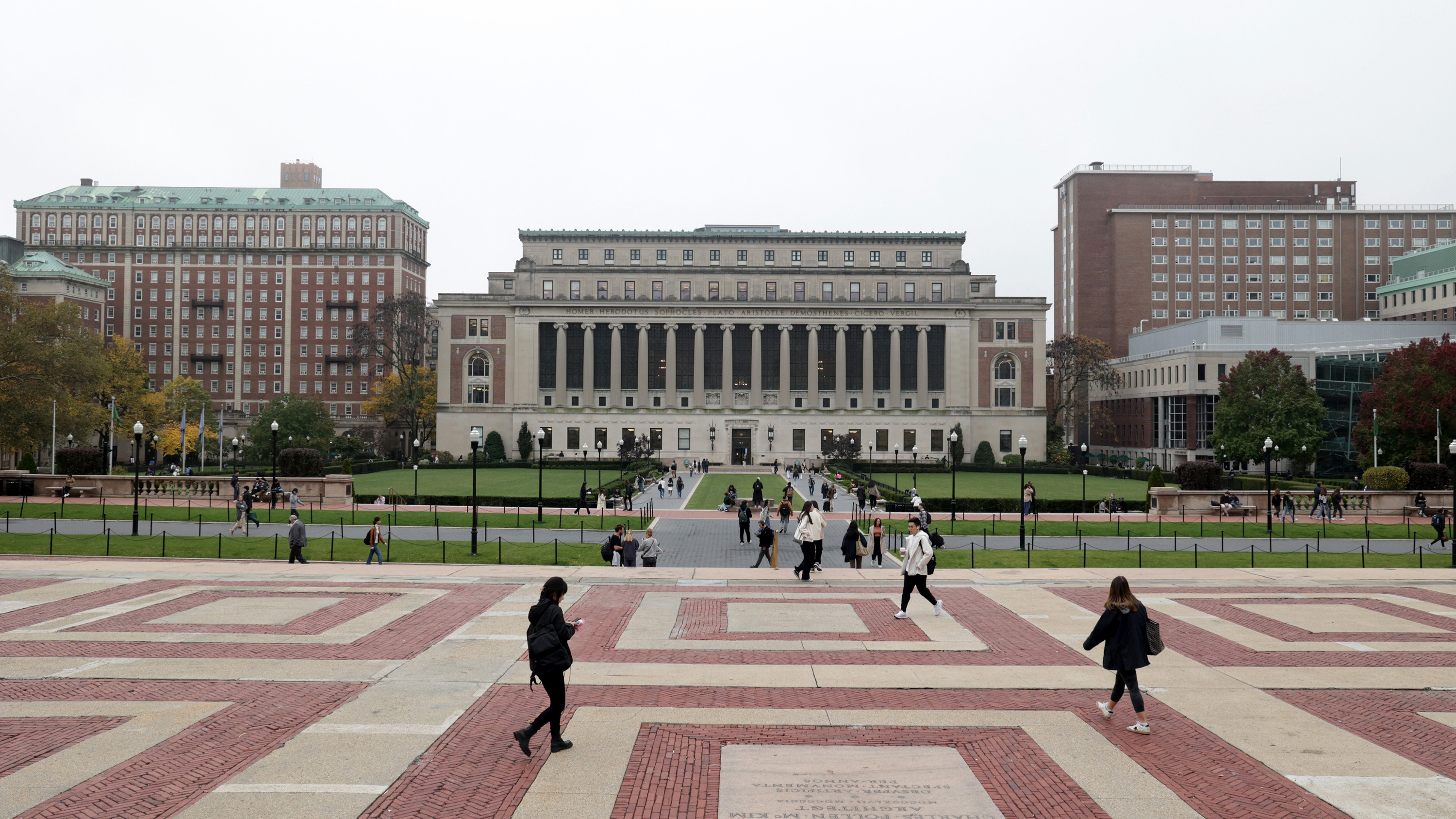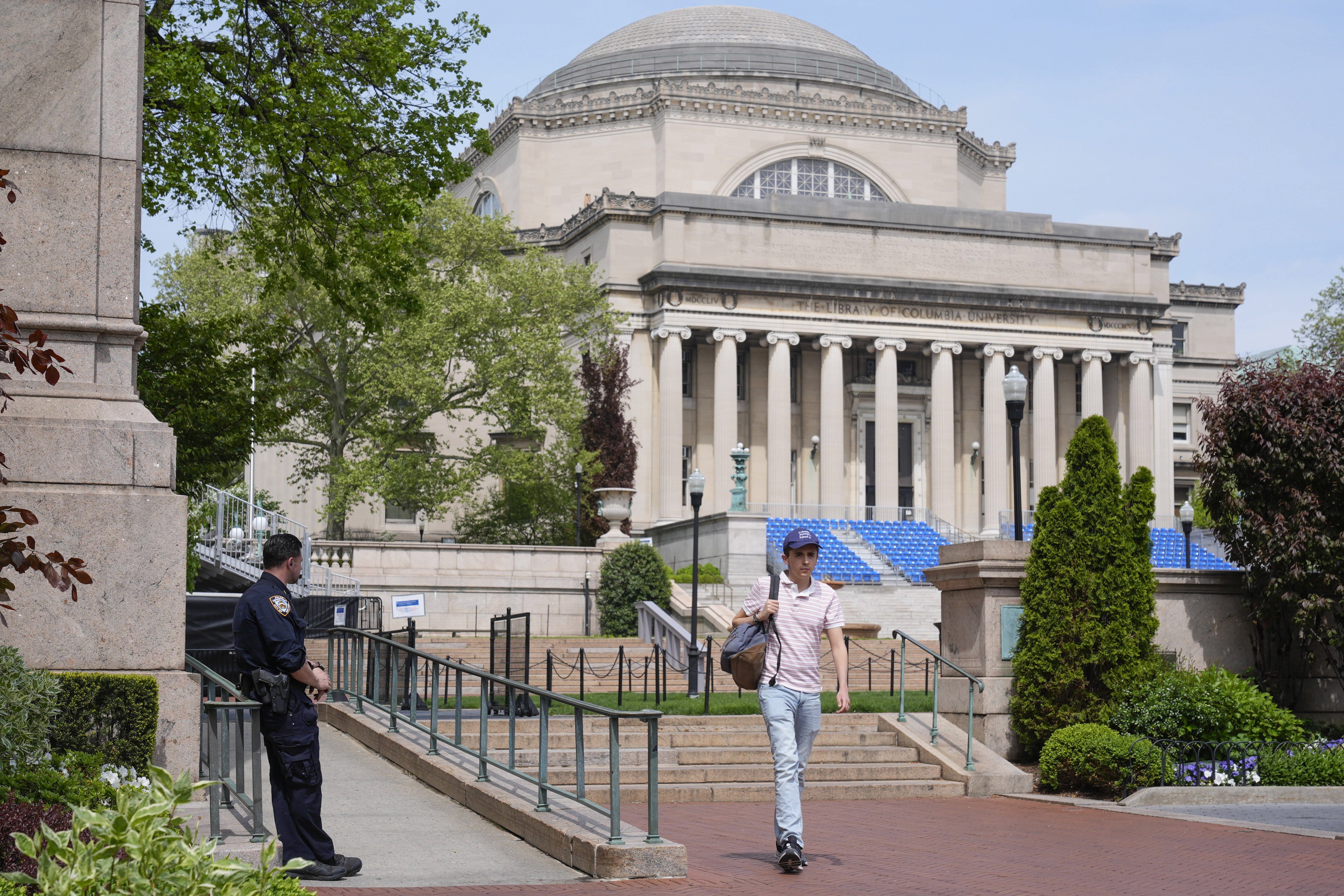Columbia Protests Fizzle: Gaza War Encampment Fails to Launch
Columbia Protests: Silence on Campus After Encampment Plans Exposed
Introduction: A Campus Calmed?
It was meant to be another showdown. Another wave of tents, another chorus of voices echoing through the hallowed grounds of Columbia University. But something unexpected happened: silence. Reports circulated that protesters were planning to reignite their demonstrations against the war in Gaza, setting up new encampments on Thursday. The potential for escalating tensions was palpable, the anticipation thick in the air. But Thursday came and went, and the promised encampments never materialized. So, what happened? Where did the protesters go? And what does this unexpected lull mean for the future of campus activism at Columbia?
The Encampment That Wasn't
NBC News had reported on Wednesday that a new wave of protests, complete with tent encampments, was poised to descend upon Columbia's main campus on Thursday afternoon. Considering the recent history of protests and counter-protests on campus, it was a reasonable prediction. These encampments, if they had materialized, would have undoubtedly intensified the already fraught relationship between the university administration, the federal government, and the student body.
High Stakes at Columbia
Columbia University has found itself at the epicenter of a national debate, a tug-of-war between freedom of speech, the right to protest, and the university's responsibility to maintain order and ensure the safety of its students. The federal government has been watching closely, adding another layer of pressure to an already complex situation. The stakes are undeniably high.
The Allure of Encampments: A Symbolic Stand
Why tent encampments? They're more than just a place to sleep. They're a powerful symbol, a physical manifestation of resistance, a visual statement that says, "We're not going anywhere." Think of them as modern-day sit-ins, designed to disrupt, to provoke, and to draw attention to a cause. The encampments become a focal point, attracting media coverage and galvanizing support. But they also carry risks.
Risks and Repercussions: The Price of Protest
While encampments are effective at grabbing headlines, they often come with consequences. Students who participate may face disciplinary action, including suspension or even expulsion. The university administration must grapple with the challenge of balancing the right to protest with the need to maintain a safe and productive learning environment. It's a delicate dance, and missteps can have significant repercussions.
Speculation: Why the No-Show?
So, why did the protesters fail to materialize? There could be several explanations:
Coordination Issues:
Perhaps the organizers struggled to coordinate their efforts. Large-scale protests require meticulous planning, and even minor glitches can derail the entire operation.
Shift in Strategy:
Maybe the protesters decided to adopt a different tactic. Knowing that the administration was prepared for an encampment, they might have opted for a less predictable approach.
Deterrent Measures:
The university may have taken preemptive measures to discourage the encampment. Heightened security or stricter enforcement of campus rules could have deterred potential participants.
Internal Disagreement:
It's also possible that disagreements within the protest movement led to a postponement or cancellation. Not all voices are always aligned, and internal conflicts can undermine even the most well-intentioned efforts.
The Power of Information: Was the Leak a Factor?
The fact that the plans for the encampment were reported by NBC News before they even happened raises questions. Did the leak compromise the element of surprise? Did it give the university administration time to prepare a response? It's entirely possible that the protesters, knowing their plans were exposed, decided to regroup and reconsider their strategy.
The University's Response: A Waiting Game?
How did Columbia University react to the news of the planned encampment? Did they increase security? Did they issue warnings to students? While we don't have specific details, it's safe to assume that the administration was on high alert, prepared to respond to any potential disruption. Their actions, whether visible or behind the scenes, likely played a role in the protesters' decision to stay away.
The Broader Context: Protests Across the Nation
Columbia is not alone. Universities across the country have been grappling with similar protests related to the war in Gaza. These demonstrations reflect a growing sense of frustration and anger among students who feel that their institutions are not doing enough to address the humanitarian crisis.
Freedom of Speech vs. Campus Order: A Balancing Act
The debate surrounding these protests boils down to a fundamental tension between freedom of speech and the need to maintain order on campus. Universities must protect the right of students to express their views, even if those views are controversial or unpopular. But they also have a responsibility to ensure the safety and well-being of their students and faculty. Finding the right balance is a difficult and ongoing challenge.
The Role of the Media: Amplifying or Inflaming?
The media plays a significant role in shaping public perception of these protests. While accurate reporting is essential, sensationalized coverage can exacerbate tensions and contribute to a climate of fear and division. It's important to approach news stories about campus protests with a critical eye, considering the potential biases and agendas of the various stakeholders involved.
The Future of Protests at Columbia: What's Next?
So, what does the future hold for protests at Columbia University? Will the students regroup and attempt another encampment? Will they adopt a different strategy? Or will the protests gradually fade away? Only time will tell. But one thing is certain: the underlying issues that have fueled these demonstrations are not going away anytime soon.
Beyond the Encampments: Addressing the Root Causes
Ultimately, addressing the root causes of these protests requires more than just managing encampments. It requires open dialogue, a willingness to listen to diverse perspectives, and a commitment to finding constructive solutions. Universities must create spaces where students can express their concerns and engage in meaningful conversations about complex global issues.
A Generation's Voice: The Power of Student Activism
Regardless of your personal views on the war in Gaza, it's important to recognize the power of student activism. These young people are passionate, engaged, and determined to make a difference in the world. Their voices deserve to be heard, even if we don't always agree with what they have to say. After all, student activism has been a driving force for social change throughout history.
Conclusion: A Temporary Truce?
The absence of new encampments at Columbia University on Thursday doesn't necessarily signal the end of protests on campus. It could simply be a temporary pause, a strategic recalibration, or a sign of shifting dynamics within the protest movement. What's clear is that the issues driving these demonstrations remain unresolved, and the university will likely continue to grapple with the challenge of balancing free speech and campus order in the weeks and months to come.
Frequently Asked Questions (FAQs)
- Q: Why are students protesting at Columbia University?
- A: Students are primarily protesting the war in Gaza, calling for Columbia University to divest from companies that support or profit from Israeli military actions.
- Q: What are encampments and why are they used?
- A: Encampments are temporary tent cities set up by protesters as a form of symbolic occupation and to draw attention to their cause. They aim to disrupt normal university operations and pressure administrators.
- Q: What are the risks for students participating in these protests?
- A: Students may face disciplinary actions from the university, including warnings, suspensions, or even expulsion. They could also face legal consequences if protests become disruptive or violate local laws.
- Q: How is Columbia University responding to the protests?
- A: The university is attempting to balance students' rights to protest with the need to maintain a safe and orderly campus environment. This involves increased security, dialogue with student organizers, and enforcement of university policies regarding protests.
- Q: What can be done to resolve the underlying issues driving these protests?
- A: Addressing the root causes requires open dialogue, active listening to diverse perspectives, and a commitment to finding constructive solutions. Universities must create spaces for students to express their concerns and engage in meaningful conversations about complex global issues.

